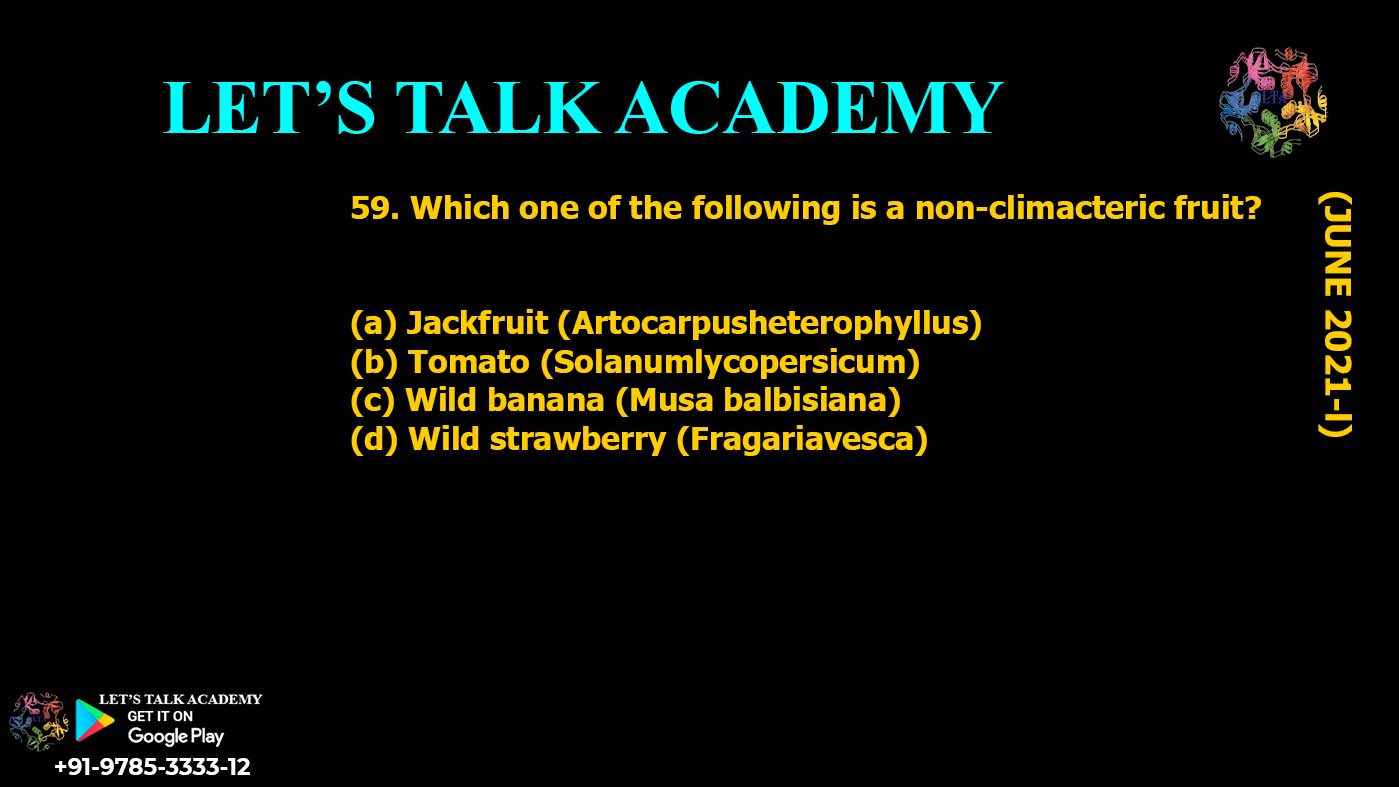59. Which one of the following is a non-climacteric fruit?
(a) Jackfruit (Artocarpusheterophyllus)
(b) Tomato (Solanumlycopersicum)
(c) Wild banana (Musa balbisiana)
(d) Wild strawberry (Fragariavesca)
Introduction
Fruits are classified into two categories based on their ripening process: climacteric and non-climacteric. The ripening of climacteric fruits is associated with a dramatic increase in ethylene production, which triggers further ripening. Non-climacteric fruits, on the other hand, do not show this rise in ethylene and often ripen slowly, usually only after they are harvested. In this article, we’ll identify which among common fruits is non-climacteric and discuss the characteristics that distinguish them from climacteric fruits.
Characteristics of Non-Climacteric Fruits
Non-climacteric fruits do not experience a spike in ethylene production during their ripening process. This means that they continue to ripen at a steady pace after they are harvested, and they do not benefit from the post-harvest ripening that climacteric fruits undergo. These fruits often have a shorter shelf life and ripen best when left on the plant.
Common Non-Climacteric Fruits
Here are a few examples of non-climacteric fruits:
-
Wild Strawberry (Fragaria vesca): This fruit is non-climacteric, meaning it doesn’t undergo a significant ethylene increase during ripening.
-
Citrus fruits (e.g., oranges, lemons): These also ripen slowly and do not benefit from post-harvest ethylene exposure.
Comparing Non-Climacteric and Climacteric Fruits
-
Climacteric fruits such as bananas, tomatoes, and jackfruit experience a sharp increase in ethylene production during ripening, which allows them to ripen after being harvested.
-
Non-climacteric fruits such as strawberries and most citrus fruits, do not rely on this ethylene-induced ripening and are often harvested when they are fully ripe.
Identifying the Non-Climacteric Fruit from the List
Among the options provided:
-
Jackfruit (Artocarpus heterophyllus): This is a climacteric fruit that ripens with an increase in ethylene production.
-
Tomato (Solanum lycopersicum): This is also a climacteric fruit that ripens with the help of ethylene.
-
Wild Banana (Musa balbisiana): Another climacteric fruit that ripens post-harvest.
-
Wild Strawberry (Fragaria vesca): Non-climacteric fruit.
Thus, wild strawberry (Fragaria vesca) is the non-climacteric fruit in this list.
Conclusion
In summary, non-climacteric fruits such as wild strawberries ripen independently of ethylene, whereas climacteric fruits like jackfruit, tomatoes, and bananas rely on ethylene for their ripening process. Understanding these differences is important for fruit storage and harvesting strategies.
Correct Answer: (d) Wild strawberry (Fragaria vesca)




2 Comments
Vikram
April 19, 2025🪷🏻
yogesh sharma
May 7, 2025Done sir ji 👍😄